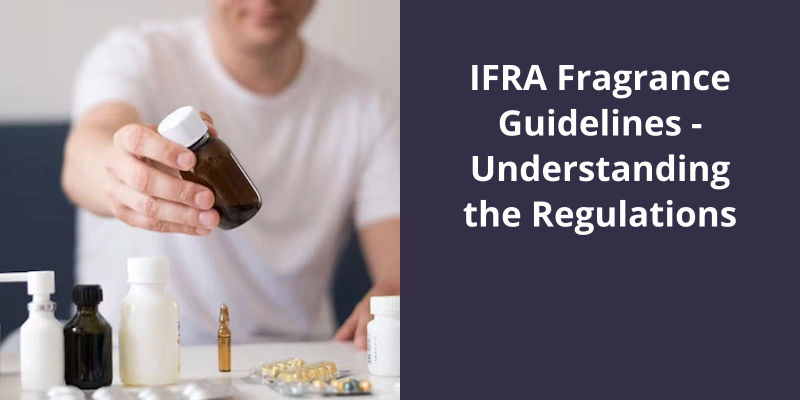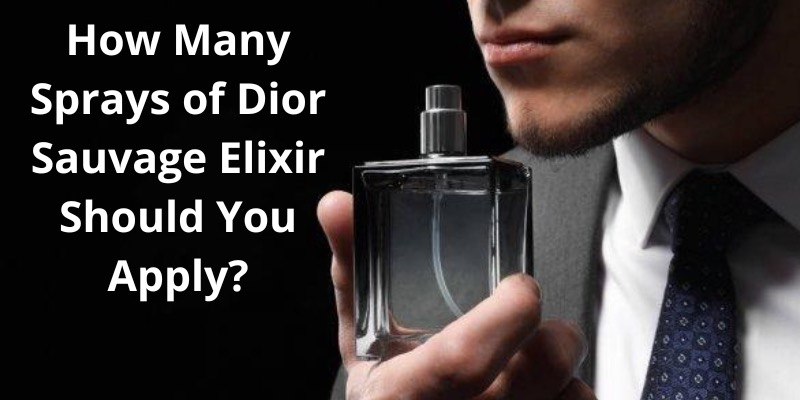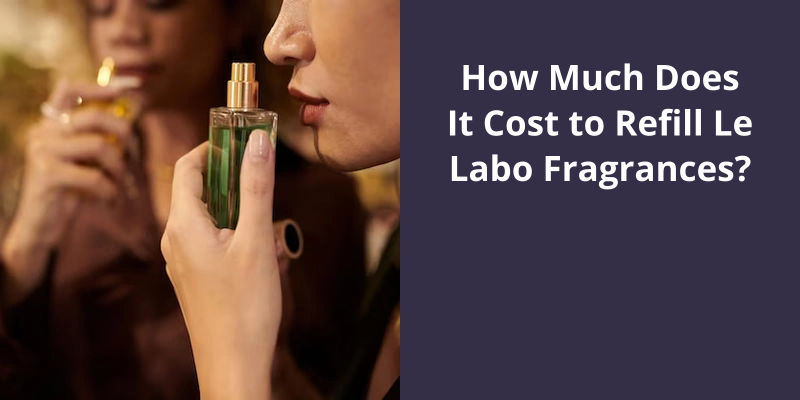The IFRA (International Fragrance Association) Fragrance Guidelines are a set of standards formed to ensure the safety and sustainability of fragrance ingredients used in a wide range of perfume and scented products. With these guidelines, IFRA aims at regulating the use of certain substances based on scientific evidence, and even restricting or banning others that raise health or environmental concerns. These guidelines, which are updated often, are globally recognized and underpin the fragrance industry’s commitment to safety, transparency, and responsibility. Consequently, developers and manufacturers of fragrances need to comply with these guidelines to ensure that their products are safe for consumers and environmentally friendly.

What Does IFRA Stand for in Fragrance?
The association was founded in 1973, and has since become a globally recognized organization for the fragrance industry. IFRA is comprised of fragrance manufacturers, suppliers, and associations from around the world. It’s mission is to provide a global standard for safe and sustainable fragrances.
IFRA Standards are based on scientific data and risk assessments to ensure the safety of fragrances for consumers. They cover a wide range of fragrance materials, from natural essential oils to synthetic molecules. The IFRA Standards also address areas such as product labeling, usage levels, and product testing.
The association oversees the entire process, from the sourcing of ingredients to the final product formulation. Compliance with these regulations is mandatory for all IFRA members.
The association also conducts research and collects data to continuously update and improve it’s Standards. It collaborates with industry experts, academic institutions, and regulatory bodies to ensure the continued sustainability and safety of the fragrance industry.
The Role of IFRA in Regulating Fragrance Ingredients and Their Potential Impacts on Human Health and the Environment
- IFRA (International Fragrance Association) is a trade association that represents the interests of the fragrance industry worldwide.
- IFRA has established a set of standards for the use of fragrance ingredients, which are aimed at ensuring the safety of these ingredients for human health and the environment.
- The standards established by IFRA are based on scientific research and are regularly reviewed and updated.
- IFRA’s standards are voluntary, but many companies in the fragrance industry choose to adopt them in order to demonstrate their commitment to safety and to meet the expectations of consumers.
- IFRA’s standards cover a wide range of fragrance ingredients, including both natural and synthetic compounds.
- IFRA’s standards are designed to address potential health risks associated with the use of fragrance ingredients, such as irritation, sensitization, and other adverse effects.
- IFRA also works closely with regulatory agencies around the world to ensure that it’s standards are consistent with local requirements.
- Overall, IFRA plays an important role in regulating fragrance ingredients and ensuring their safety for human health and the environment.
Now that we’ve established what IFRA is, let’s delve deeper into the IFRA usage rate. This rate is crucial as it determines the amount of fragrance that can safely come in contact with the skin. Understanding the IFRA usage rate ensures that the product you’re using is safe for your skin and prevents the risk of irritation or allergic reactions. Read on to learn more about how the IFRA usage rate is determined and why it’s essential for the fragrance industry.
What Is the IFRA Usage Rate?
The IFRA usage rate is an essential factor in the fragrance industry. It’s a safety guideline that helps ensure that the essential oils used in perfumes, colognes, and skincare products are safe for human use. The IFRA usage rate is determined through extensive testing and scientific analysis to prevent any adverse reactions and avoid potential health risks.
Tier 1, the most stringent tier, applies to products that come into direct contact with the skin, such as body lotions, and prevents the use of certain chemicals or essential oils with known skin sensitization effects.
Tier 2 applies to products like laundry detergents and air fresheners, which have minimal skin contact, but inhalation exposure is significant. Tier 3 applies to niche products and categories, and Tier 4 is for products that don’t come into direct contact with skin or mucous membranes.
How the IFRA Usage Rate Is Enforced and Monitored in the Fragrance Industry
The International Fragrance Association (IFRA) has set guidelines on the usage rate of fragrances to ensure the safety of consumers. Compliance with these guidelines is monitored through regular inspections and testing conducted by the IFRA and it’s member organizations. Companies found to be violating IFRA usage rates may face penalties or legal action.
Maintaining compliance with the International Fragrance Association (IFRA) is a crucial aspect of ensuring the safety and quality of fragranced products. One key factor in adhering to IFRA standards is the maximum usage level, which determines the highest amount of fragrance that can be used in a product without exceeding recommended levels. By adhering to IFRA maximum usage levels, companies can create safe and effective products that meet industry standards and regulations.
What Is IFRA Maximum Usage Level?
IFRA, or the International Fragrance Association, is an organization that enforces standards to ensure the safety and sustainability of fragrance materials. One of the main standards set by IFRA is the maximum usage level for each fragrance material used in various applications such as perfumes, soaps, detergents, and candles. The maximum usage level is determined based on safety assessments that take into consideration the toxicity, potential for skin sensitization, and environmental impact of the fragrance material.
Exceeding the maximum usage level can pose health risks and cause allergic reactions in some people.
For instance, the maximum usage level for a fragrance material in a soap may be lower than that in a perfume due to the differences in the frequency and duration of exposure.
Notably, the IFRA maximum usage level isn’t a one-size-fits-all approach. It may vary based on the geography, market, and cultural factors. For example, the maximum usage level for a particular fragrance material in the European market may differ from that in the Asian market due to differences in regulatory requirements and consumer preferences.
It’s a standard that takes into account factors like toxicity, potential for skin sensitization, environmental impact, and intended use.
As fragrance plays a crucial role in the sensory experience of using cosmetics, manufacturers need to be careful in determining the right percentage to use. The amount of fragrance used can affect the product’s quality, and the type of product also plays a significant role. Let’s take a closer look at why fragrance percentage matters in cosmetics.
What Percentage of Fragrance Is Used in Cosmetics?
This is because fragrances can be irritating to the skin and can cause allergic reactions in some people. Fragrances are usually added to products to improve their scent and make them more appealing to the consumer. However, they can also serve as masking agents to disguise unpleasant odors from other ingredients.
The percentage of fragrance used in cosmetics can also depend on the type of fragrance used. Natural fragrances, such as those derived from essential oils, may be used at lower levels due to their stronger scent.
It’s important to note that the percentage of fragrance used in cosmetics must be within safe and regulated limits. The International Fragrance Association (IFA) sets guidelines for the safe use of fragrances in cosmetics to ensure that they don’t cause harm to consumers.
How Are Fragrances in Cosmetics Regulated by Government Agencies?
- The government regulates fragrances in cosmetics through various agencies such as the FDA and EPA.
- Fragrances used in cosmetics must be safe for human use and undergo rigorous testing and evaluation for potential health risks.
- Certain fragrance ingredients may be restricted or prohibited in cosmetics, depending on their potential toxicity or allergenic properties.
- Manufacturers must also label all fragrance ingredients in their products, in order to inform consumers of potential allergens.
- Overall, government regulation plays a crucial role in ensuring the safety and transparency of fragrance use in cosmetics.
Source: Levels of Fragrance – General – Chemists Corner
However, the use of fragrance in skincare products has become a controversial topic in recent years due to the potential for skin irritation and allergic reactions. Despite this, many manufacturers continue to include fragrance in their formulations for it’s pleasant scent and marketing appeal. Let’s take a closer look at the pros and cons of fragrance in skincare products.
What Percentage of Skincare Products Are Fragrance?
This is because many of the ingredients used in skincare products have natural scents that may not always be pleasant. For instance, some ingredients may have a pungent odor, while others may simply be odorless but still require masking. In most cases, fragrance is added to skincare products to make them more appealing to consumers.
While fragrance may enhance a products scent, it can also cause adverse reactions in some people. Fragrance can irritate the skin, causing rashes, itching, and redness. Additionally, some fragrances are made from chemicals that are known to be harmful to human health. For example, synthetic fragrances often contain phthalates, which have been linked to hormone disruption and reproductive problems.
However, even these products may contain some form of fragrance. In such cases, the product may be labeled as fragrance-free even though it contains a small amount of fragrance.
It’s important to note that the fragrance percentage in skincare products is usually less than 1%. Ingredient lists on skincare products are required to list ingredients in order of concentration, so fragrance will typically fall towards the end of the list. This means that it makes up a small fraction of the products overall formula.
These products shouldn’t contain any form of fragrance, natural or synthetic.
However, for individuals with fragrance sensitivities or concerns about the potential health risks associated with synthetic fragrances, it’s important to seek out skincare products that are specifically labeled as fragrance-free or unscented.
When it comes to making your own lotion, deciding how much fragrance oil to use may seem like a daunting task. However, it’s important to get the ratio right in order to achieve the desired scent and to avoid any adverse reactions to the skin. Generally, adding 1% to 4% fragrance oil to your lotion base is a safe and effective range to work with. Let’s explore why this range is recommended and how to ensure your lotion turns out perfectly scented.
What Percentage of Fragrance Oil Should Be in Lotion?
Adding fragrance to lotion can enhance the overall scent and sensory experience of using the lotion. However, it’s important to not go overboard with the percentage of fragrance oil added. A general guideline is to add 1% to 4% fragrance oil to your lotion base.
Going above this percentage can lead to skin irritation, as fragrance oils are known to cause sensitivity in some individuals. It’s also important to note that some fragrance oils are stronger than others, so it may be necessary to adjust the percentage based on the intensity of the scent.
It’s recommended to use high-quality fragrance oils specifically designed for use in skincare products. These fragrance oils are typically formulated to be skin-safe and non-irritating.
Adding the fragrance oil too quickly or not mixing well enough can result in clumps or separation in the lotion.
For example, a lotion meant for daily use on the body may benefit from a lower percentage of fragrance oil to avoid overwhelming the senses.
By following the recommended percentage guidelines and using high-quality, skin-safe fragrance oils, you can create a beautifully scented lotion without compromising on skin health and safety.
Tips for Selecting the Right Fragrance Oil for Your Lotion, Including Considering the Base Scent of the Lotion and the Intended Audience/Occasion
- Consider the base scent of the lotion
- Think about the intended audience/occasion
- Experiment with different fragrance oils
- Start with small quantities to test the scent
- Choose high-quality fragrance oils from reputable suppliers
- Avoid using too much fragrance oil, as it can be overwhelming
- Try blending different fragrance oils to create unique scents
- Take notes on your fragrance oil combinations for future reference
Conclusion
These guidelines are constantly evolving to keep up with advancements in technology and research on fragrance ingredients. Through rigorous testing and evaluation, the IFRA sets limits on the use of certain ingredients and provides recommendations for safe levels of use. Compliance with these guidelines is crucial for fragrance manufacturers and suppliers to maintain high-quality products and consumer trust.





